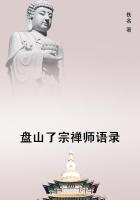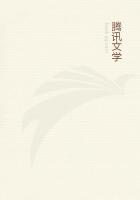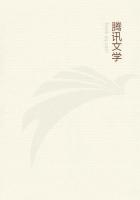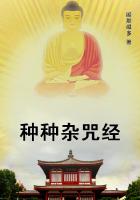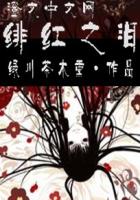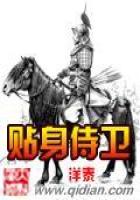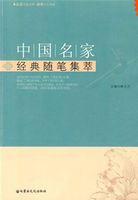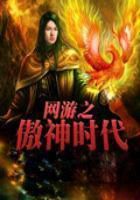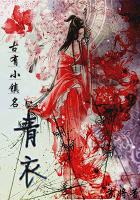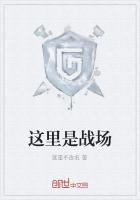Mr. Cooke was an officer in the Madras army, who, being home on furlough, was attending some lectures on anatomy at the University of Heidelberg, where, on March 6, 1836, he witnessed a demonstration with the telegraph of Professor Moncke, and was so impressed with its importance, that he forsook his medical studies and devoted all his efforts to the work of introducing the telegraph. He returned to London soon after, and was able to exhibit a telegraph with three needles in January, 1837. Feeling his want of scientific knowledge, he consulted Faraday and Dr. Roget, the latter of whom sent him to Wheatstone.
At a second interview, Mr. Cooke told Wheatstone of his intention to bring out a working telegraph, and explained his method. Wheatstone, according to his own statement, remarked to Cooke that the method would not act, and produced his own experimental telegraph. Finally, Cooke proposed that they should enter into a partnership, but Wheatstone was at first reluctant to comply. He was a well-known man of science, and had meant to publish his results without seeking to make capital of them. Cooke, on the other hand, declared that his sole object was to make a fortune from the scheme. In May they agreed to join their forces, Wheatstone contributing the scientific, and Cooke the administrative talent. The deed of partnership was dated November 19, 1837. A joint patent was taken out for their inventions, including the five-needle telegraph of Wheatstone, and an alarm worked by a relay, in which the current, by dipping a needle into mercury, completed a local circuit, and released the detent of a clockwork.
The five-needle telegraph, which was mainly, if not entirely, due to Wheatstone, was similar to that of Schilling, and based on the principle enunciated by Ampere--that is to say, the current was sent into the line by completing the circuit of the battery with a make and break key, and at the other end it passed through a coil of wire surrounding a magnetic needle free to turn round its centre. According as one pole of the battery or the other was applied to the line by means of the key, the current deflected the needle to one side or the other. There were five separate circuits actuating five different needles. The latter were pivoted in rows across the middle of a dial shaped like a diamond, and having the letters of the alphabet arranged upon it in such a way that a letter was literally pointed out by the current deflecting two of the needles towards it.
An experimental line, with a sixth return wire, was run between the Euston terminus and Camden Town station of the London and North Western Railway on July 25, 1837. The actual distance was only one and a half mile, but spare wire had been inserted in the circuit to increase its length. It was late in the evening before the trial took place. Mr.
Cooke was in charge at Camden Town, while Mr. Robert Stephenson and other gentlemen looked on; and Wheatstone sat at his instrument in a dingy little room, lit by a tallow candle, near the booking-office at Euston. Wheatstone sent the first message, to which Cooke replied, and 'never,' said Wheatstone, 'did I feel such a tumultuous sensation before, as when, all alone in the still room, I heard the needles click, and as I spelled the words, I felt all the magnitude of the invention pronounced to be practicable beyond cavil or dispute.'
In spite of this trial, however, the directors of the railway treated the 'new-fangled' invention with indifference, and requested its removal. In July, 1839, however, it was favoured by the Great Western Railway, and a line erected from the Paddington terminus to West Drayton station, a distance of thirteen miles. Part of the wire was laid underground at first, but subsequently all of it was raised on posts along the line. Their circuit was eventually extended to Slough in 1841, and was publicly exhibited at Paddington as a marvel of science, which could transmit fifty signals a distance of 280,000 miles in a minute. The price of admission was a shilling.
Notwithstanding its success, the public did not readily patronise the new invention until its utility was noised abroad by the clever capture of the murderer Tawell. Between six and seven o'clock one morning a woman named Sarah Hart was found dead in her home at Salt Hill, and a man had been observed to leave her house some time before. The police knew that she was visited from time to time by a Mr. John Tawell, from Berkhampstead, where he was much respected, and on inquiring and arriving at Slough, they found that a person answering his description had booked by a slow train for London, and entered a first-class carriage. The police telegraphed at once to Paddington, giving the particulars, and desiring his capture. 'He is in the garb of a Quaker,'
ran the message, 'with a brown coat on, which reaches nearly to his feet.' There was no 'Q' in the alphabet of the five-needle instrument, and the clerk at Slough began to spell the word 'Quaker' with a 'kwa';but when he had got so far he was interrupted by the clerk at Paddington, who asked him to 'repent.' The repetition fared no better, until a boy at Paddington suggested that Slough should be allowed to finish the word. 'Kwaker' was understood, and as soon as Tawell stepped out on the platform at Paddington he was 'shadowed' by a detective, who followed him into a New Road omnibus, and arrested him in a coffee tavern.
Tawell was tried for the murder of the woman, and astounding revelations were made as to his character. Transported in 1820 for the crime of forgery, he obtained a ticket-of-leave, and started as a chemist in Sydney, where he flourished, and after fifteen years left it a rich man.
Returning to England, he married a Quaker lady as his second wife. He confessed to the murder of Sarah Hart, by prussic acid, his motive being a dread of their relations becoming known.

